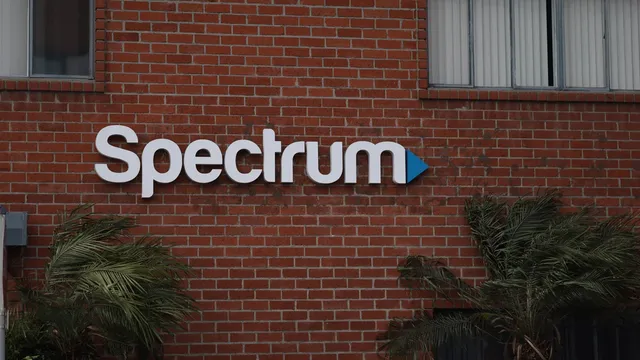
Spectrum offers $25,000 reward after vandalism causes outages in Los Angeles
2025-06-15 18:33- On Sunday morning, an individual cut Spectrum's fiber optic lines, resulting in outages for customers in Los Angeles and Ventura.
- Spectrum technicians restored service in Ventura that same day, while restoration efforts continued in Los Angeles.
- The company is offering a $25,000 reward for information leading to the identification of the suspect involved.
Express your sentiment!
Insights
In the early hours of Sunday morning, a significant incident of vandalism occurred in the Van Nuys neighborhood of Los Angeles, California, where an individual intentionally cut Spectrum's fiber optic lines, leading to a temporary service outage affecting numerous customers in Los Angeles and Ventura counties. This act disrupted communication for many homes and businesses, creating concerns over the potential impact on emergency services. Spectrum announced their commitment to restoring services promptly, with technicians successfully restoring service in Ventura by Sunday morning, while work continued throughout the day in various areas of Los Angeles. Spectrum highlighted that telecommunications infrastructure has increasingly become a target for vandalism due to the valuable metals some companies integrate into their systems. However, they clarified that their fiber optic lines do not contain copper, which is a primary target for thieves seeking precious metals. The situation underscores a broader issue regarding the theft of telecommunications components, which law enforcement in Los Angeles has faced for years, often resulting in arrests during crackdowns on metal theft sparked by various incidents, including major wildfires that left debris in which metal wiring could be illegally harvested. As public safety concerns arise from such vandalism incidents, Spectrum's public statement indicates the intertwined consequences between these crimes and their impact on the community. The company is not only affected financially but also recognizes the potential jeopardization of local businesses and vital emergency services. The significant disruption caused by the cutting of fiber optic lines raised alarms not only for everyday users who rely on connectivity for daily tasks but also for local businesses dependent on consistent service. In light of the incident, Spectrum is actively seeking assistance from the public to identify the suspect responsible for the act. They have launched a reward program of $25,000 for tips leading to the arrest of the individual involved. The incentive is intended to engage community members in addressing the ongoing issue of vandalism, which has become increasingly common and problematic within the telecommunications sector. Spectrum urged anyone with information to contact law enforcement or their dedicated tip line, emphasizing the collective responsibility of the community in safeguarding essential services and infrastructure.
Contexts
The impact of fiber optic line damage on emergency services is both significant and multifaceted, as communication infrastructure plays a critical role in the effective response to emergencies. Fiber optic cables are the backbone of modern communication systems, providing high-speed data transfer essential for voice, video, and data communications. When these lines are damaged—whether due to natural disasters, accidents, or vandalism—the effects can ripple through emergency response systems, leading to delayed responses, lack of coordination, and ultimately, compromised safety for individuals in crisis situations. Many emergency services rely heavily on the instantaneous communication capabilities provided by fiber optics to relay information, coordinate with other responders, and access essential data from remote systems. Therefore, any disruption can lead to confusion and inefficiency, hampering the ability of emergency personnel to perform their duties effectively. Moreover, the extent of disruption caused by fiber optic damage varies based on the location and degree of damage. For instance, in urban areas heavily reliant on interconnected systems, a single cut line can potentially jeopardize multiple services, affecting police, fire, and medical response teams. In more rural settings, the impact may not be as immediate due to less interconnected infrastructure, but the lack of redundancy can still lead to significant delays in emergency response. The recovery process after such incidents can also be prolonged and costly, with repair times potentially stretching from hours to days, which can have dire consequences in life-or-death situations. Additionally, the occurrence of fiber optic line damage emphasizes the need for both preventative measures and efficient emergency response protocols. Implementing stronger protective measures for these lines can mitigate the likelihood of damage, while training emergency response teams to operate under compromised communication conditions can enhance their resilience. The integration of alternative communication technologies, such as satellite phones or radio systems, can also act as a backup to ensure that emergency services remain operable in case of fiber optic disruptions. Furthermore, establishing a rapid response infrastructure to expedite the repair of damaged lines could significantly reduce downtime and restore vital communication links more swiftly. In conclusion, fiber optic line damage poses a substantial risk to emergency services, impacting their ability to respond effectively in critical moments. Understanding and addressing the vulnerabilities in communication systems can significantly enhance the resilience and efficiency of emergency responses. As we continue to rely more on advanced communication technologies, prioritizing the integrity of these systems will be essential to ensure public safety and the effective functioning of emergency services.